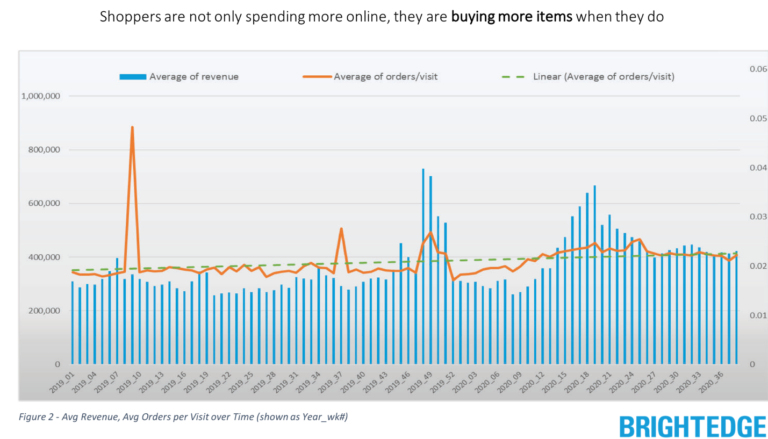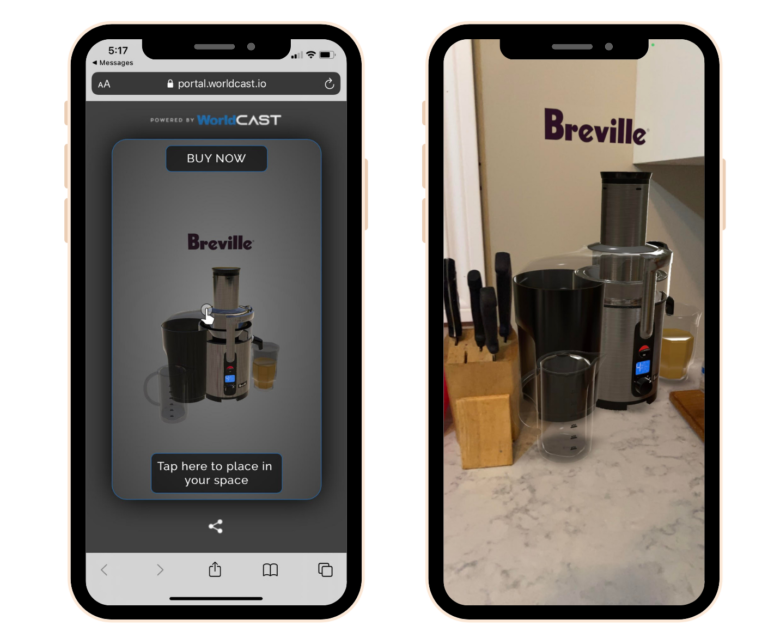30-second summary:
- Market volatility and rapid shifts in consumer behavior will continue in 2021.
- The longer the COVID pandemic goes on the more ingrained digital behaviors become.
- Shoppers are buying more online and spending more when they do.
- Consumers are becoming more comfortable online experiences over with time.
- Taking in-store experiences and taking them digital is becoming more common.
- Search and market insights are becoming mission-critical for all marketers
To say the last several months have been a roller coaster would be an understatement. This year has been one for the books as we’ve collectively experienced something no generation before us has: the impact of the COVID-19 pandemic on a constantly connected, technology-empowered population.
We’ve run the gamut of emotional states and economic impacts. As brands and consumers alike prepare for our most unusual holiday shopping season yet, it’s become clear that we’re in this for the long haul.
While we cannot be sure on every modified consumer behaviors that will stick and what we’ll rush back to when the pandemic subsides, marketers planning for next year will want to be aware of these factors.
Consumers have reduced discretionary spending
This year, PwC broke its Global Consumer Insights Survey into two timeframes, one before and one after the onset of the COVID pandemic. Among their findings:
- 50% of consumers are using social media more than pre-pandemic.
- 93% said they are likely to maintain their increased use of online shopping via their mobile phone
- Just 16% of people said they have increased their in-store shopping for non-food items since the pandemic hit; 33% are unchanged and 50% have decreased in-store shopping.
Brands should expect that market volatility and price sensitivity will persist, not indefinitely but certainly well into 2021. The longer the COVID pandemic goes on, the more ingrained these adapted consumer behaviors become.
Consumers have real, valid reservations and safety concerns about in-store shopping. Online and phone ordering systems, contactless payment and delivery options, curbside pickup and BOPIS, and other processes that enable physical distancing are key to continuing to serve these customers.
Shoppers are buying more online and spending more when they do
Research from BrightEdge (my employer) into 144 ecommerce websites found that by the end of March 2020, website visits and the average revenue generated from those visits had increased over the same period in 2019. Even after the initial panic shopping spike early in the lockdown, activity leveled off and remained higher than the year prior.
What’s more, the number of items purchased increased, although average revenue per order was steady to decreasing in value.
In short, consumers seem to be browsing and making smaller purchases more often. Engage shoppers while they are browsing with targeted promotions, personalized content, and relevant upsells/cross-sells.
Marketers must also keep in mind that COVID-19 rapidly increased ecommerce adoption, for many consumers it was out of necessity and not a choice, but as more consumers get comfortable with online that trend will continue.
People are craving security and simplicity
Gartner research finds that consumers are craving respite and escape, with key ascending values including the statements:
- “I greatly desire and search for those occasions when I can just rest and relax.”
- “I need to feel secure and protected.”
- “I strive to live a simple and uncluttered life.”
This shift creates a number of opportunities for brands. First, you can reflect these needs in the language and visuals used in your marketing campaigns. Speak directly to consumers about how your products and services fulfill these needs, and don’t forget that many will be looking to provide these feelings to others in the gifts they purchase this holiday season.
Second, there is a great opportunity here to create experiences that engage your audience, not only providing entertainment but nurturing your relationship and building trust, as well. Even prior to COVID-19, research had found that 73% of people who took part in a brand’s experiential marketing were more likely to purchase from the brand involved.
Online/virtual brand experiences can help to fill the void left in the absence of real-world events. For example, Home Depot has created a virtual reality app to help re-create instore experiences online.
Another example is the WorldCAST AR engine from KP9 Interactive. Here WebAR is allowing 3D representations of consumer goods, from food to furniture, so products can be viewed at scale by consumers at home.
Finally, experiences can generate great content to power your marketing campaigns and even inform product development, as well.
Consider the case of The Uber Elevate Summit, in which participants had a chance to experience the first flying car in a virtual reality chamber developed by Bell Helicopter. People who saw the experience online were able to provide feedback that the company used as both marketing collateral and input for developers
Consumers will continue to “reset” as the pandemic goes on
Nielsen research has identified four key ways that consumer behavior will continuously shift in response to varying COVID-related conditions:
- Basket reset: As regulation and government decisions continue to dictate the circumstances of our lives, consumers must account for new essentials including masks and sanitizer. As a result, their dollar must stretch further.
- Homebody reset: As business closures and shelter-in-place recommendations recur in various regions, those consumers affected will prioritize spending on items that increase their comfort at home.
- Rationale reset: As luxury and travel spending is restricted, how and why consumers choose to spend their money will evolve.
- Affordability reset: Unemployment and economic uncertainty drive consumers to risk aversion and seeking out products that deliver value and peace of mind.
Brands must get in position now to listen and understand where consumers are at any given moment—how they are affected by COVID-19, and what reactions that impact is triggering within them. More than ever, marketers must be agile and have the technology in place to inform smarter business decisions is as near to real-time as possible.
Four ways to prepare for 2021
In light of this continuing uncertainty, how can you plan and prepare for what 2021 may bring?
Get closer to your customer
Gathering insights from disparate point solutions wastes valuable time.
In an environment this tumultuous, consumers may already have moved on by the time you formulate a strategy for reaching them.
Arm your team with a platform that gathers and analyzes search insights, the closest representation of consumer voice, and gives your brand the ability to take action in the moments consumers are most receptive.
Get creative with content and optimizations
More than ever, marketing must be a two-way conversation between your brand and its customers. Consumers don’t want to be “talked at;” they are seeking meaningful conversations and relationships with the people with whom they choose to do business.
Using AI-powered digital marketing software gives brands scale that simply isn’t possible otherwise. In addition to gathering real-time insights, AI can help to recognize trends and opportunities, spot chances to engage, and even personalize content on the fly to better connect with consumers.
Integrate across channels
As consumers’ browsing behavior has increased, so too has the sheer volume of opportunities for brands to get in front of their ideal customers. Living through a pandemic has fundamentally changed us. People want to know who they are spending their hard-earned dollar with; they are more thoughtful about purchasing decisions and how they spend their time.
Consumers are spending more time browsing and considering their options. Repurpose content to answer these elevated informational needs across channels from social to email to search, video, and even audio. Give consumers opportunities to dig into meatier, more in-depth content.
Measure and elevate
Understanding what resonates and drives revenue in as near to real-time as possible is going to be key to staying agile, and the best source of business intelligence is your own search analytics. Search queries are a rich, telling source of information that give you a direct line of sight into consumer needs, preferences, and motivations.
They can help you identify your visitors with transactional intent and inform optimizations to move shoppers further in their decision-making process.
Brands will continue to be challenged by unsettled, anxious consumers and constantly changing markets for the foreseeable future. In the absence of historic data, we can rely on, the ability to gather and interpret recent and real-time behavioral data at scale is critical.
source https://www.clickz.com/these-covid-related-digital-behaviors-arent-likely-going-away-in-2021/264221/



No comments:
Post a Comment